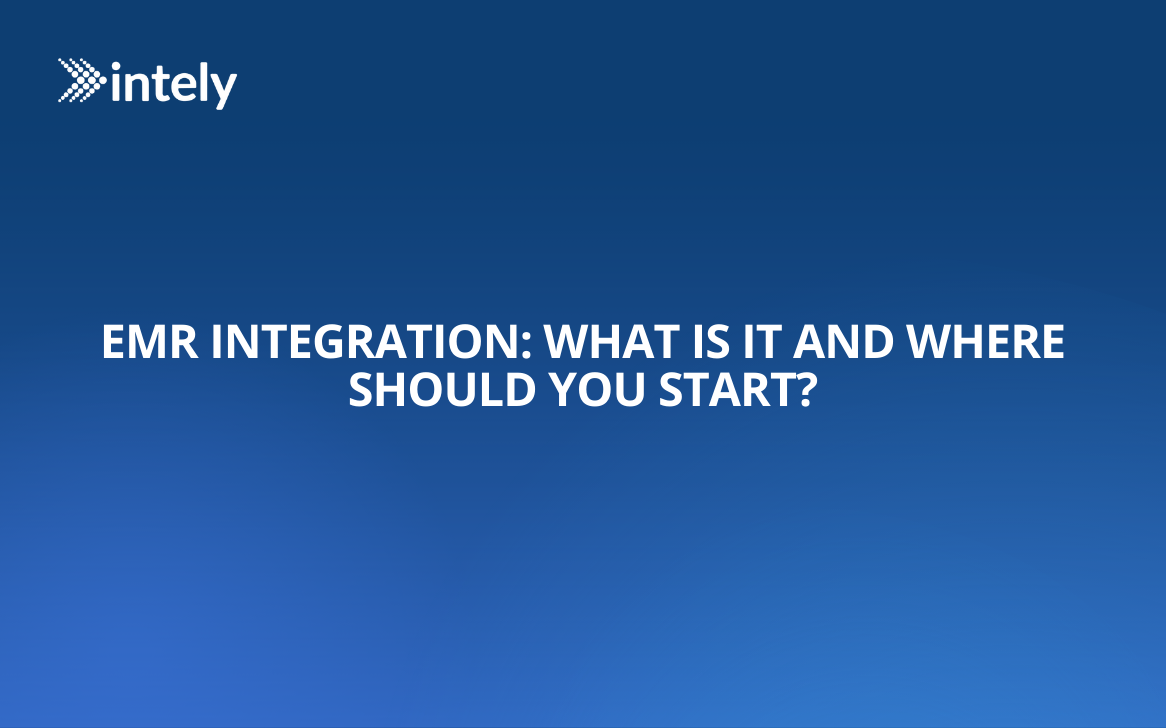What’s New with intely: May Roundup
Here are the highlights of all the content we have posted in the past month. We hope this will give you a sense of what intely is all about, and you'll feel…
The Basics The introduction of personal and commercial computer systems planted the seeds of a technological revolution in the 20th century. With virtually…
.png)

The introduction of personal and commercial computer systems planted the seeds of a technological revolution in the 20th century. With virtually every market on the planet being directly affected, the healthcare industry has been no exception. In the U.S. specifically, the American Recovery and Reinvestment Act was introduced in 2009 and required that all private and public healthcare providers adopt the use of Electronic Medical Records (EMR) by 2014.
So, what exactly are EMRs and what does EMR Integration actually entail?
The importance of EMR Integration transcends the mere threat of government penalization for non-compliant providers. The entire system provides huge advancements for both the provider and patient experience. These include:
No healthcare provider is without its EMR integration challenges. While integration will ultimately increase the efficiency and effectiveness of healthcare, the industry must still navigate a continuous road of obstacles. Common challenges come in the form of:
Review an in-depth explanation of EMR integration challenges
The opportunities of an EMR integration are vast. These system implementations can have a positive effect on multiple areas of a healthcare business including:
athenahealth provides one of the top cloud-based EMR/EHR (Electronic Health Records) systems in the healthcare industry. Its open and scalable platform, combined with the ability to allow providers to customize their experience with specific apps from their Marketplace store, make it one of the most practical integration solutions available.
And the best part? Intely is now a proud partner of athenahealth! Access to Intely’s enterprise integration and data automation solutions are now available on the Marketplace.
The demand for EMR integration has created an entirely new industry over the past decade. Some of the top EMR integration providers and platforms include:
While any one provider may not be the end-all solution, Connect by Intely provides a magnificent compromise between streamlined, user-friendly functionality and affordability.
The first step toward any revolutionary change is exciting… and almost always daunting. Here at Intely, it doesn’t have to be!
Book a complimentary strategy session with our team, and we will help you build a plan tailored to your own unique needs.
Access our appointment calendar here and find a time that works for you!
An Overview of EMR: Meaning, Benefits & How They Differ from EHRs
Challenges to Interoperability in EMR
EMR Integration is the process of merging Electronic Medical Records (EMR) with other digital applications and systems within a healthcare provider's operations to create a unified, streamlined platform. This enables the seamless sharing and management of patient data across various healthcare services.
EMR Integration is crucial for several reasons:
The primary challenges of EMR Integration include:
EMR Integration provides vast opportunities to improve healthcare operations, including:
To begin with EMR Integration: